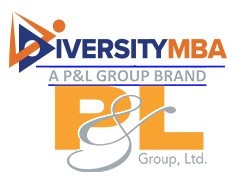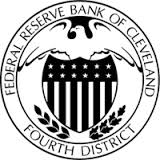1. What is your mission statement for diversity, equity and inclusion?
The Federal Reserve Bank of Cleveland (FRBC) is committed to creating a diverse and inclusive workforce with the support of the Office of Diversity, Equity, Inclusion, and Opportunity (ODEIO). ODEIO fosters an inclusive environment both inside and outside of the Bank through fulfilling its Office of Minority and Women Inclusion (OMWI) responsibilities related to workforce diversity, supplier diversity, and financial literacy. As one of our core Bank values, inclusion means fostering an environment in which diverse talents and perspectives are embraced and employees feel empowered to bring their best selves to work.
At the FRBC, following the guiding principles of diversity and inclusion means that we, as an organization and as employees, appreciate and respect those individual, personal, and organizational attributes that we share and those that make us unique. Diversity is broader than issues of race, ethnicity, and gender; it includes other dimensions such as age, sexual orientation, socioeconomic status, physical ability, religious and political beliefs, gender expression, and thought. We recognize that for our organization to be successful, we need to create a culture that is inclusive and collaborative, one that understands the value of a diverse workforce and an inclusive work environment.
2. Please give an overview of current D&I efforts (please include any metrics to support impact)
In 2020, the Bank Bank developed a racial equity and economic inclusion framework. This framework reflects the Bank’s most significant undertaking relative to diversity, equity, inclusion, and opportunity (DEIO). Workforce diversity, supplier diversity, research, community development, and community outreach continue to be Bank priorities, as outlined within the framework. Furthermore, the framework reflects an increase of resources and attention for these programs so that the Bank can better serve the Fourth Federal Reserve District. The racial equity framework and Program on Economic Inclusion (PEI) serves as a starting point to explore the ways in which our research and analyses contribute to the racial equity conversation and related issues.
3. What shift have you made to be more inclusive and create a sense of belonging with the pandemic and social justice issues impacting the workforce?
This year presented unanticipated national challenges that, despite their severity, offered a variety of opportunities for the Bank to respond and to lead. Prompted to further action by the ongoing pandemic and social and political unrest across the nation, the Bank publicly restated its commitment to and renamed our attention to the work of diversity, equity, inclusion, and opportunity. In addition to the launch of the racial equity framework and Program on Economic Inclusion, the Bank focused attention and resources to support essential onsite employees and an expanded remote workforce.
4. What lessons have you learned and what words of advice can you give (especially with the current political climate)
Although the Bank has experienced some successes, we recognize the considerable amount of work that remains to be done. Such work includes guiding racial minority employees toward expanded responsibilities and opportunities and, ultimately, toward leadership roles. The work, we believe, will enhance the Bank’s culture, and help ensure that racial minority employees feel valued and included, sentiments which we believe lead to a more engaged workforce and more successful outcomes.
The Bank’s president, Loretta J. Mester, PhD said, “[l]imiting opportunity because of race, ethnicity, or gender threatens the health of our economy. Here at the Federal Reserve Bank of Cleveland we will be asking ourselves how our policy decisions, whether in the realm of monetary policy, regulatory policy, or payments policy, can promote inclusive growth. We recognize that this is our responsibility – it is not someone else’s problem.

